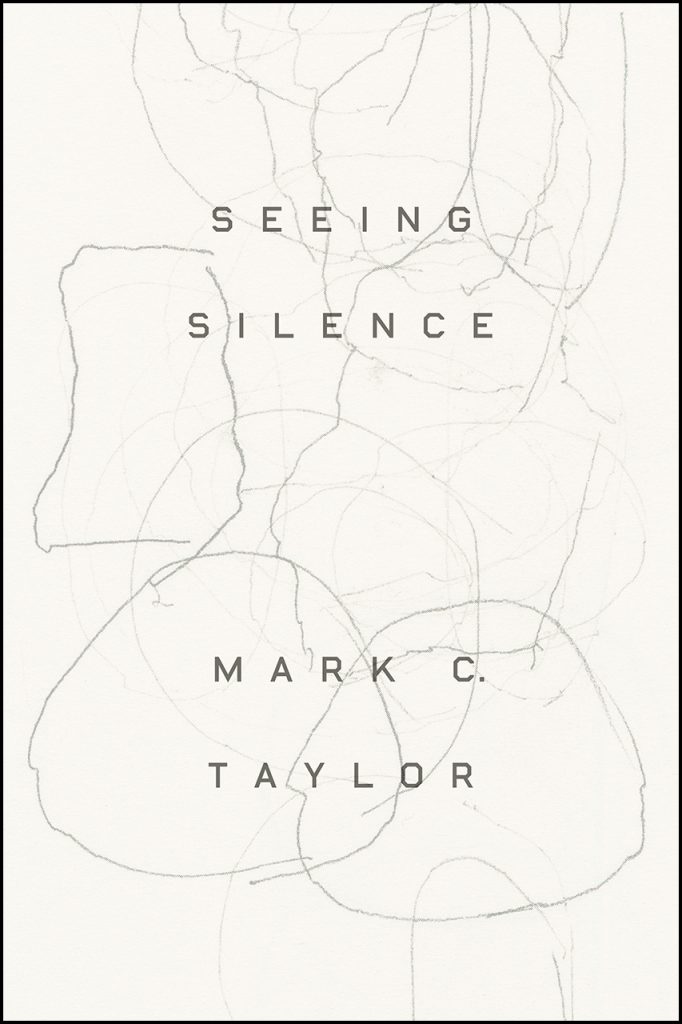Close Your Eyes, Open Your Ears: Read an Excerpt from “Seeing Silence” by Mark C. Taylor
Mark C. Taylor’s forthcoming book, Seeing Silence, offers a new philosophy of silence for our nervous, chattering age. Taylor explores the many variations of silence by considering the work of leading modern and postmodern visual artists, weaving in the insights of philosophers, theologians, writers, and composers. During times of stress and uncertainty, Taylor encourages us to turn to silence as a means to understand the world around us—to hear what is not said, and to attend to what remains unsayable.
Pause to listen and read along as Taylor narrates the opening passages of Seeing Silence.
Video by Oscar d’Angeac. Produced by Armand Latreille & Lucas Zabotin.
Silence is no weakness of language.
It is, on the contrary, its strength.
It is the weakness of language not to know this.
—Edmond Jabès
Close your eyes, open your ears. Close your eyes, open your ears and listen. Listen attentively, listen patiently. What do you hear? Now imagine . . . try to imagine the impossibility of imagining Now. Imagine, try to imagine not being—not being here, not being now. Not being here, not being now, not being elsewhere, not being anywhere. Imagine being before being. Imagine being after being. Imagine being Not. Imagine not imagining. Imagine not being. What do you hear? Keep listening, listening attentively, listening patiently. Whom do you hear? Whom do you not hear? What do you hear? What do you not hear? Nothing perhaps? Perhaps nothing? What is the sound of Nothing? Silence, perhaps? Perhaps silence? What does hearing silence sound like? What does hearing silence mean? Does hearing silence mute silence? What does not hearing or not being able to hear silence mean? Keep listening, keep thinking, keep asking until you hear, if not silence itself, echoes of silence by seeing nothing.
Pause. Pause to ponder. Pause to ponder a lingering question: What color is silence? Perhaps white? Perhaps black? Perhaps something in between—something approximating infinite shades of gray? Through a strange synesthesia, to see the invisible is to hear silence, and to hear silence is to see the invisible.
Silence is stillness—stillness is silent. Not merely the absence of noise, silence is the stillness that sounds and resounds in all sounds and echoes in every word. There is no Word without silence, and no silence without Word. Silence is the ever-receding horizon of words. Words allow silence to speak by unsaying itself. To hear silence is to betray silence—to hear by not hearing, to tell by not telling, to reveal by not revealing. Telling Not. Hearing Not. Revealing Not. The lapse of language is the stillness that stirs in the rustling of words.
Silence. The impossibility of silence. Gods, like mortals, sometimes speak, sometimes do not; they sometimes remain silent by speaking, sometimes speak by remaining silent. “Whither is God?” screamed Nietzsche’s madman. “I will tell you. We have killed him, you and I. All of us are his murderers. But how did we do this?” We have killed God by having forgotten how to hear silence. If, however, to hear silence is to silence silence, then the death of God is unavoidable. The question that remains is whether there is another silence, a deeper silence, a silence beyond silence yet to be heard in the stillness that surpasses understanding.
Religion is the apprehension of the Unspeakable, Unnamable, Unknowable, Unfigurable once named “God” or “God beyond God.” “God” is one of the pseudonyms of “the Real”—there are others, many others. Neither here nor there, neither now nor then, the Real is always near, yet forever distant. It (the gender is insistently neutral) approaches by withdrawing, and withdraws by approaching. The pulsating rhythm of the Real marks and remarks the ebb and flow of life and death. Unspeakable, Unnameable as such, the Real remains shrouded in silence, or, perhaps, silence is the Real itself. Silence is the whence and whither of all that is and everything that is not. We come from and return to silence, and in-between, silence is the in-between, endlessly murmuring to still the noise created to avoid it. A plenitude that is a lack, and a void that is a fullness, the ligare of re-ligare binds and rebinds us to the silence that haunts all that once seemed real. To hear silence is to find stillness in the midst of the restlessness that makes creative life possible and the inescapability of death acceptable.
Without. Before. From. Beyond. Against. Within. Around. Between. Toward. With. In. . . . Silence. Not present without being absent, not absent without being present, and, thus, never a position or pro-position, but always a pre-position. Thirteen plus one stations along an errant path that no longer has to be merely the Via Dolorosa. The silence that punctuates the stages along life’s way allows saying to be said and the Unsayable to be heard. If we listen to silence perhaps gods, and with them mortals, will be reborn. Perhaps.
Mark C. Taylor is professor of religion at Columbia University and is the founding editor of the Religion and Postmodernism series published by the University of Chicago Press. He is the author of over thirty books, including Speed Limits: Where Time Went and Why We Have So Little Left and Abiding Grace: Time, Modernity, Death.
Seeing Silence will publish this July. It is available for preorder on our website or from your favorite bookseller.
